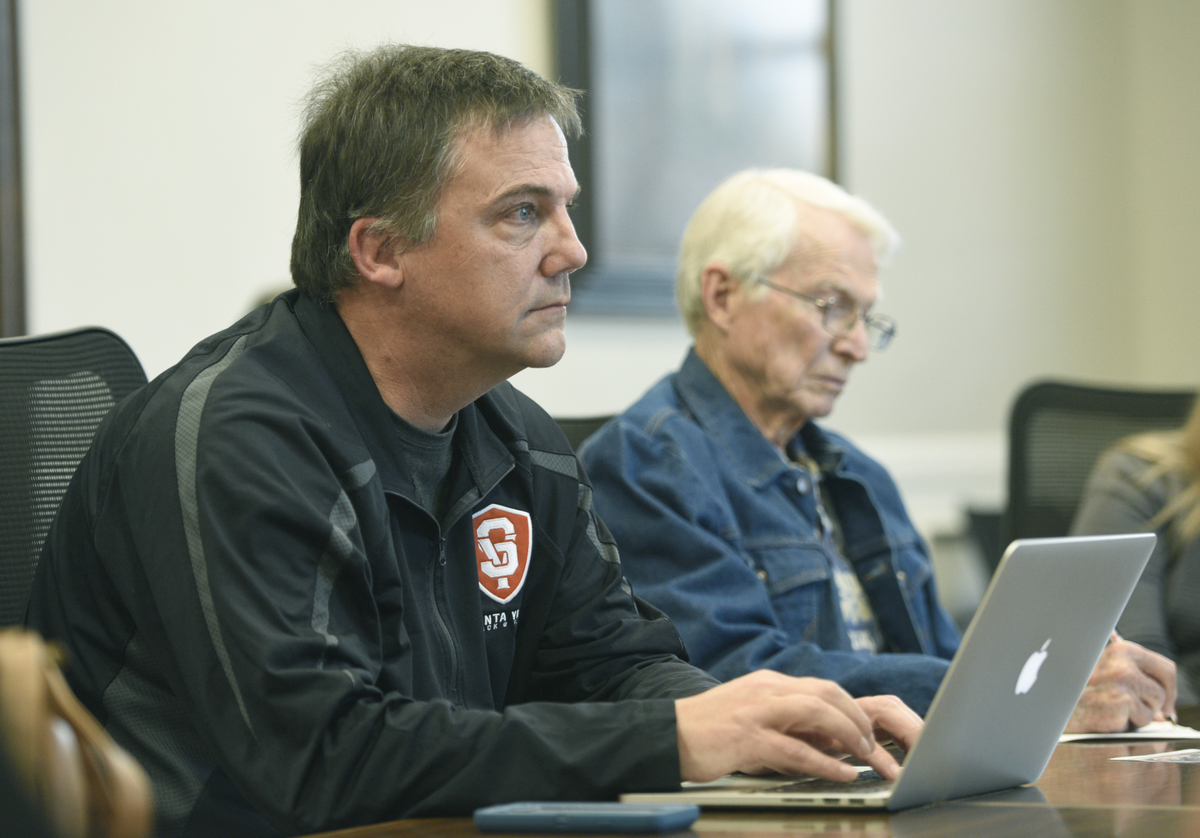Does Santa Barbara Need a Homeless Czar?
Council Gets Massive Brain Dump Instead of Showdown over Homeless Housing

Jeff Shaffer doesn’t want to be the city’s homeless czar and doesn’t think any one person should or could be. No one, he said, can juggle the enormity of so much nuanced information in one brain. Likewise, Santa Barbara’s City Council has made a point not to appoint one — or to even create a new homeless commission, as Councilmember Jason Dominguez unsuccessfully pushed for on November 26. Even so, Shaffer could very well find himself the city’s de facto homeless czar.
For the past 15 years, Shaffer has been working quietly and effectively on various boots-on-the-ground homeless outreach efforts with little fanfare. In that time, he’s earned the trust of key players in Santa Barbara’s sprawling universe of government bureaucracies and nonprofits that attempt to deal with the issue of homelessness as both their vocation and avocation. To an unusual extent, he’s also built trust with key business interest groups, some of which have lobbied loudly for increased enforcement as the answer.
In the past few months, Shaffer — quiet, serious, and intense — has dusted off the nonprofit he created back in 2005, the Santa Barbara Alliance for Community Transformation, or SBACT. Earlier this summer, SBACT got $150,000 — $100,000 from the City Council and the rest from the Santa Barbara Foundation — to broker some sort of workable understanding between City Hall, homeless shelter providers, homeless service organizations — about 27 entities in all — and neighborhood residents and activists who in the past 12 months have fiercely resisted two proposals to create permanent supportive housing projects for chronically homeless individuals.
The political uproar that killed the most recent proposal — the Salvation Army’s ill-fated 14-unit home slated for Alisos Street on the city’s Eastside — gave rise to the council discussion two weeks ago. Given that politically charged background, many in City Hall were leery about the prospects of hosting a public discussion on permanent supportive housing, as Councilmember Dominguez — who compared the Alisos proposal to a toxic dump site — proposed.
Councilmember Kristen Sneddon gave Dominguez the second vote needed to force the council discussion, but only after an intense back and forth over the tone and tenor of the discussion. In the end, the council heard a lengthy, wonky, detailed discussion about how the City of Santa Barbara is faring with regard to homelessness. Despite increased public alarm over tents sprouting up on downtown sidewalks and the growing visibility of homeless individuals pushing shopping carts, Santa Barbara homeless numbers have not gone up appreciably in the past two years.
Kimberly Albers, director of homeless services for the County of Santa Barbara, gave the council a factoid-rich earful. There are near 900 shelter-bed spaces of various stripes in the city, she stated, and 330 units of permanent supportive housing. About 260 of those, she said, adhere to the newer “housing first” approach. This approach draws considerable concern because chronically homeless individuals are placed in housing whether they commit to sobriety or not. Albers said this approach is much more effective and more expensive than the traditional “housing ready” approach. She cited her experience in Kern County in 2012 tracking the 12 homeless people who placed the greatest demands on the system. With the housing-first approach, Kern County saw an 87 percent reduction in hospital visits.
Councilmember Dominguez expressed doubt there were enough supportive services available to make such an approach work locally, suggesting the emphasis in the future should be on services, not housing units. Albers — a 12-year homeless service provider before being hired by the county — did not budge. “Absolutely both,” she stated, were necessary.
Dominguez expressed frustration that no one entity was in charge when it came to the millions of dollars — state, federal, local, and charity — spent annually on homeless services by umpteen agencies. He unsuccessfully pressed his council colleagues to create a new oversight commission that would provide a modicum of accountability and a meaningful venue for public participation. As Councilmember Sneddon noted afterward, Shaffer and SBACT will provide that function in the months ahead, meeting with stakeholders and neighborhood groups.
Shaffer did address the council, stating that he looked to City Hall for leadership and land. Each councilmember, he stated, needed to identify sites in their respective districts where some variant of permanent supportive housing could be developed.
While at the speaker’s podium, Shaffer took the opportunity to dispel what he described as persistent misperceptions about homeless people. None, he said, are “service resistant,” but rather need to be offered services three to four times a week rather than once or twice a month. And based on the most recent street census, 77 percent of homeless people in Santa Barbara lived in the county before becoming homeless. They are not “transients,” he said, but residents.
Correction: On Dec. 6, the $200,000 originally in this story as seed money for SBACT’s homeless initiative was corrected to $150,000.



